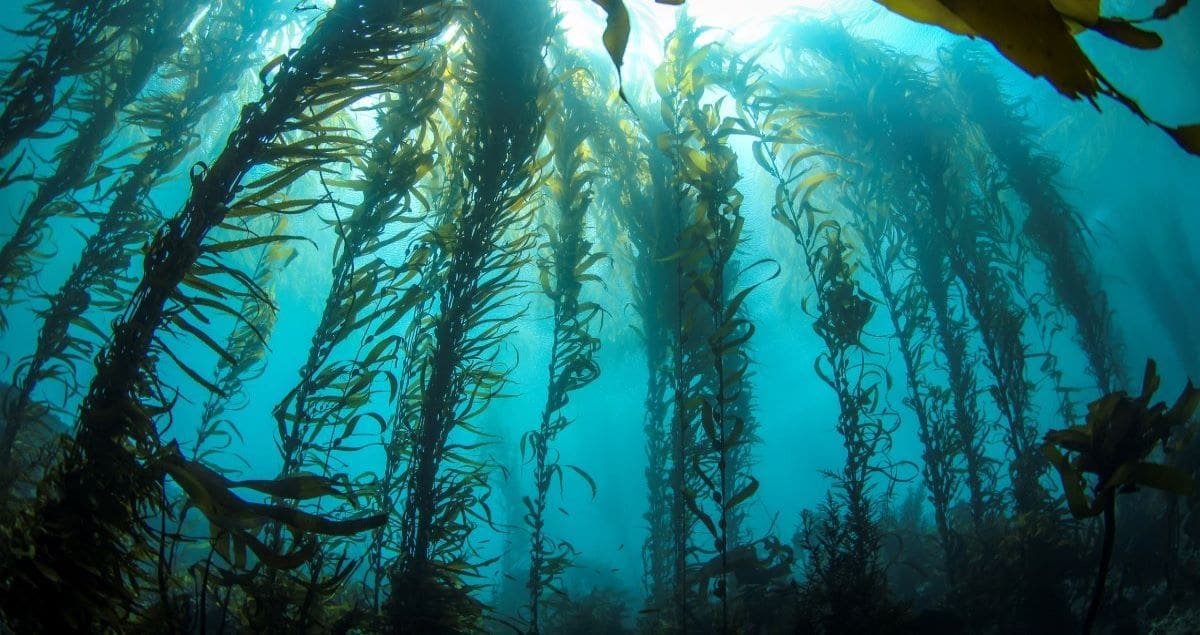
Dr. David Koweek, Science Director at Ocean Visions
Dr. Jim Barry, Senior Scientist and Benthic Ecologist at the Monterey Bay Aquarium Research Institute (MBARI)
(As published in an op-ed in Mongabay)
The humble seaweed has attracted serious attention as a potential solution to restore the climate due to its remarkable ability to absorb carbon dioxide—the primary greenhouse gas contributing to climate change. The seaweed industry now stands ready to get a big lift from the CHIPS and Inflation Reduction Acts, which represent game-changers for carbon dioxide removal strategies broadly. As the sector prepares for this new wave of funding, it’s crucial that responsible science leads the way.
To be clear, it’s right to feel in a rush. While the imperative remains emission reductions, climate science tells us that we also need to remove and store massive amounts of carbon dioxide from the atmosphere if we’re to address the harms of climate change, some of which are already impacting communities around the world. In fact, The Intergovernmental Panel on Climate Change says that we need to remove between 100 and 1000 gigatons of carbon dioxide buildup in this century to have a chance of achieving the 1.5° Celsius target for warming.
One need only look to the ocean to understand the sense of urgency. It’s under threat from a host of pressures, but none loom larger than those caused by greenhouse gas pollution, which drives dangerous warming and acidification. Ocean warming is in turn causing deoxygenation, sea level rise, and the disruption of critical marine ecosystems that humanity needs for food production, coastal protection, and more. Not only is the ocean our life support system, it’s also a valued source of recreation and solace for many.
The good news is that there are many approaches to climate stabilization in development. These climate solutions can take many forms, from forest restoration and other land management practices to technologies like direct air capture of carbon dioxide.
Cultivating seaweed and sinking it into the deep ocean for carbon sequestration is getting particular attention right now. The strategy is an especially attractive one. Unlike tree planting, for example, growing seaweed requires no fresh water or fertilizers, it grows exceptionally quickly, and it doesn’t compete with other land-use needs. Seaweed also offers coastal protection via wave reduction, and it can enhance fish production and marine biodiversity. It’s also great at capturing carbon. In fact, seaweed captures up to 20 times more carbon per acre than terrestrial forests.
With all the ingredients for success, and an accompanying desire to act quickly, growing and sinking seaweed in the deep ocean has received widespread media, scientific, philanthropic, and commercial attention. Add to that an intensifying demand for carbon credits and the sector is advancing quickly as a rapid carbon solution.
Amid the rush, legitimate questions are being asked. Scientifically, how might large-scale cultivation arrays impact ocean ecosystems? Can this approach be scaled in such a way that the benefits to society and ocean ecosystems exceed the likely impacts of large-scale expansion of seaweed cultivation? For how many years will carbon reliably be sequestered? We need to address these inquiries and advance the right research quickly—not only to avoid unintended consequences to ocean ecosystems and society, but also to mitigate the real risk of delegitimizing a possible climate strategy before it even has a chance to prove itself. Alongside these scientific questions, we must also weigh the social and climate benefits of using seaweed to sequester carbon against its value as a low-carbon source of food or energy.
Currently, not enough information exists on cultivating seaweed for carbon sequestration to make informed decisions. We have just a small number of modeling studies, and studies of natural systems that exhibit similar behavior. Even less is known about what happens to carbon and the deep-sea ecosystem when seaweed is intentionally sunk. Until we can answer these questions, we cannot know whether this is a solution worth implementing.
This is why we convened an international, multidisciplinary working group to develop a research framework for seaweed cultivation and sinking that includes guidance for controlled field trials. Controlled field trials are the best approach to establish cause-effect relationships in real-world, complex marine environments. As such, they are a core component of evaluating proposed ocean-based climate solutions.
We estimate that the type of research that will effectively answer these questions will cost up to one billion USD. While this sounds like a big number, consider that $632 billion annually is being channeled to climate change mitigation and adaptation efforts at a global level. As funding scales from multiple countries and sectors to continue to address current and future risks, investing in research for potential carbon removal solutions is an important piece of the puzzle.
Additionally, this research must be accompanied by supportive governance frameworks developed at a global level. Governance systems must provide mechanisms to balance the risks of testing and developing ocean-based carbon dioxide removal technologies against the risks of failing to develop adequate solutions to the climate crisis. These governance systems should also facilitate information-sharing to ensure that carbon dioxide removal strategies develop equitably and globally, addressing scientific and ethical issues.
Reputable research accompanied by sound and inclusive governance systems will represent a rising tide to lift the broader community of those exploring and investing in the research and development of all types of carbon dioxide removal approaches. Doing so is no less than an imperative for safeguarding life on Earth as we know it.